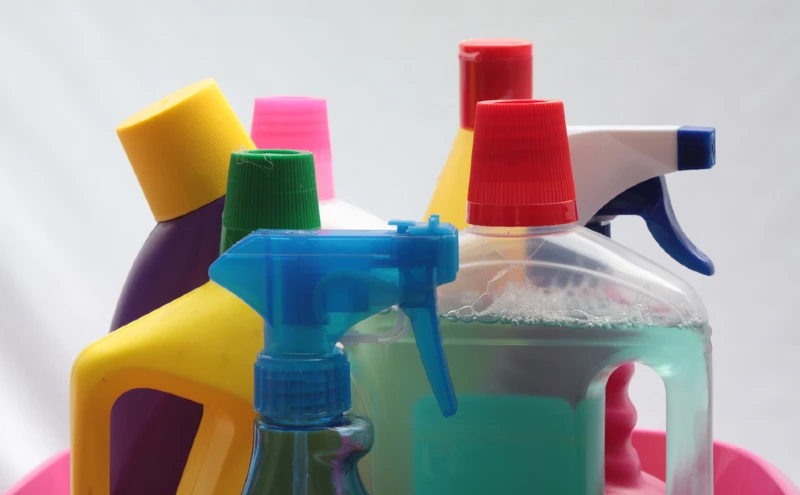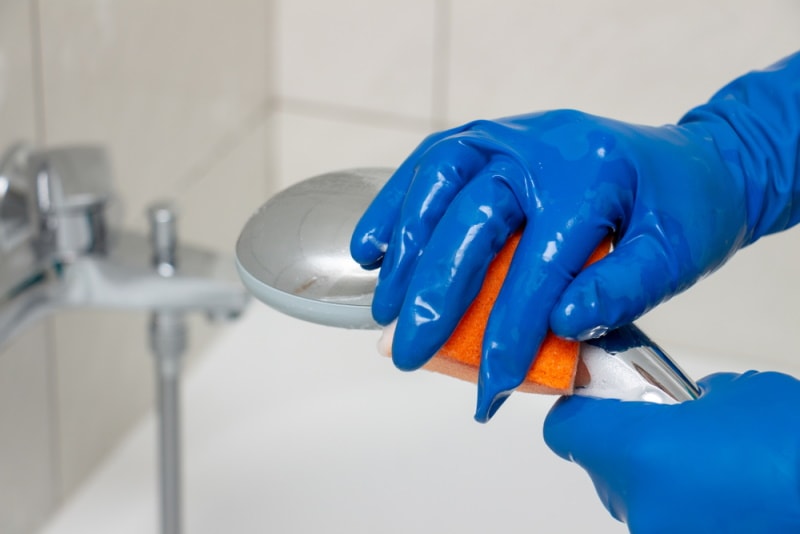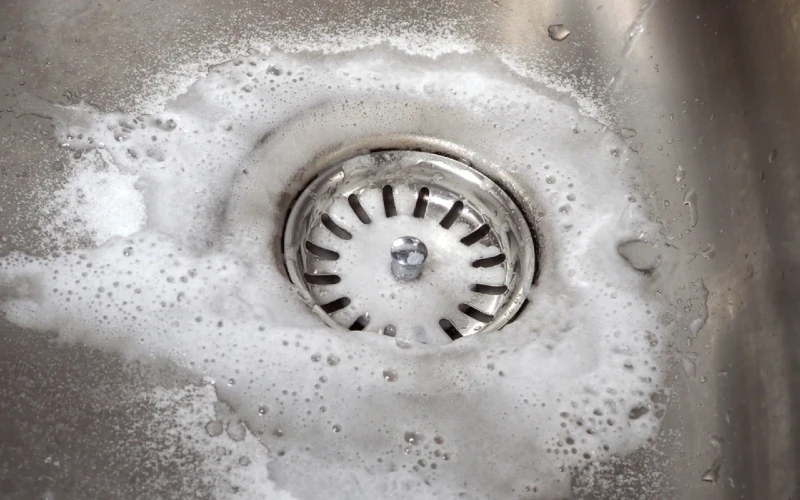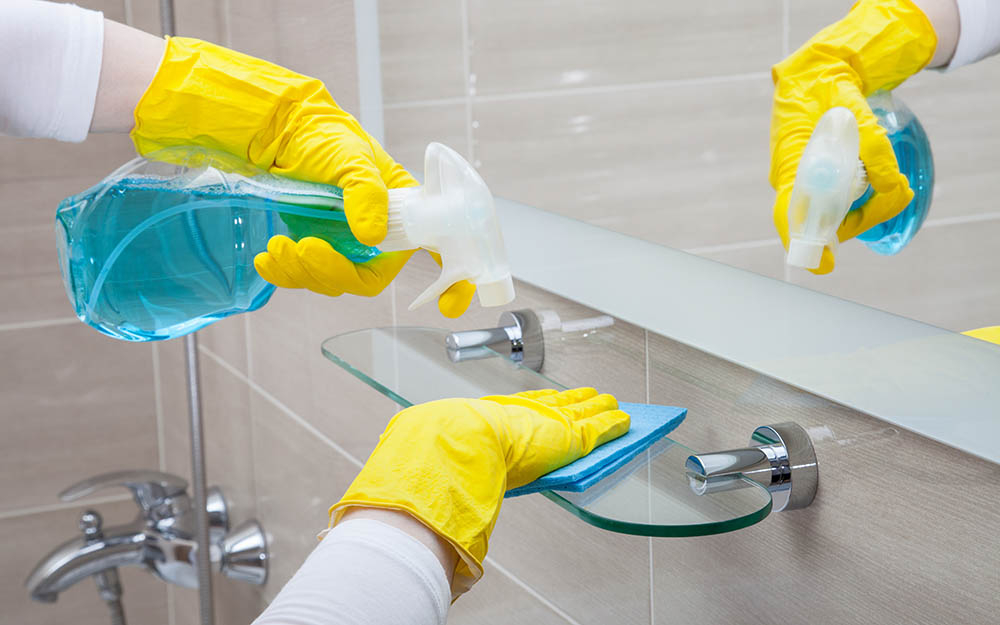What Is CLR? Here’s How It Works
-

- Last updated:

Sometimes, no matter how much you clean and scour, you find those unsightly stains that can drive you mad, like rust and hard water stains. Not only is the appearance of the stains unsightly, but they can also be harmful to some surfaces. To prevent permanent stains, you may need to occasionally use something like CLR, a heavy-duty cleaner used to clear and remove mineral buildup. If you want to learn more about CLR and if it would be useful in your home, read on!

What Is CLR?
CLR is a heavy-duty cleaner specifically formulated to clean calcium, lime, and rust from surfaces like sinks, toilet bowls, and bathtubs. These stains are usually the result of minerals in the water that builds up over time and stain appliances, fixtures, and other household surfaces.
CLR is a safe alternative to chemicals and is part of the EPA’s Safer Choice Program.1 It does not contain phosphates and is safe for septic systems, plumbing, glass, fiberglass, and much more.
How Does It Work?

CLR is a powerful cleaner formulated specifically for stains resulting from the dripping and buildup of minerals in the water. Mineral deposits like lime and calcium are commonly found in the kitchen. In addition to calcium and lime buildup, the bathroom is also problematic for rust in places like the sink, toilet, and bathtub.
To rid the sink, toilet, and tub of these nasty stains, apply CLR to the problem areas. Let the formula sit for about 3 or 4 minutes and wipe clean. The stains should be wiped away along with the CLR cleaning solution.
Each acid in the CLR Formula is added to target a specific problem. The main ingredients in CLR are designed to target certain issues and remove stains like calcium, lime, and rust.
- Water: To reduce toxicity in the solution
- Citric Acid: Reduces odor and softens the water
- Gluconic Acid: Helps to dissolve mineral deposits
- Lactic Acid: Provides moisture and helps to prevent evaporation of the solution
- Glycolic Acid: Penetrates tough stains on surfaces to loosen and remove them
- Sulfamic Acid: Cleans metal and removes rust
What Are Surfactants?
Surfactants are necessary for cleaning products. They make it easier for the chemicals in the CLR solution to create activity on the cleaning surface so the solution can attack and remove the stains. In the absence of surfactants, the chemicals would have a tough time penetrating the surfaces and removing the rust and mineral stains.
Where Is It Used?

CLR can be used on many household surfaces, and it removes stains that many other cleaners cannot. CLR is formulated to remove rust stains resulting from hard water and calcium, and limescale buildup on many surfaces. It is safe for your septic system, too. There is a lengthy list of appliances and surfaces in your home that can be cleaned with CLR. The manufacturer provides a complete list of uses for your reference, but here we list some of the common ones.
- Washing machines
- Dishwashers
- Sinks
- Slow shower heads
- Kettles
- Shower screens and doors
- Chrome
- Stainless steel
- Fiberglass
- Tools
- Stainless steel and chrome fixtures
While CLR can be used on many surfaces, it may not be suitable for others like marble or natural stone. It is recommended that you read all precautions, warnings, and instructions for use before applying the product to any surfaces, keep it out of the reach of children, and do not combine it with other cleaners or chemicals.
Advantages of CLR
CLR is a powerful cleaner that is specifically formulated to attack stains that other cleaners cannot. It can easily dissolve lime and calcium deposits and remove them from many household surfaces and fixtures. It is safe for removing rust stains from toilet bowls, sinks, bathtubs, fiberglass, stainless steel, glass, chrome, washing machines, showerheads, humidifiers, and more.
CLR products are part of the EPA’s Safer Choice Program since it is septic-safe, phosphate-free, and recognized as a safer option over traditional chemicals.
Disadvantages of CLR

CLR should only be used in well-ventilated areas. When using CLR, open doors and windows and avoid staying in small spaces, like shower stalls, for long periods. Ideally, CLR should be diluted with one part solution and one part water.
CLR contains acids that cannot be used on some surfaces. Surfaces like wood, wallpaper, carpeting, clothing, brass, natural stones, copper, galvanized metals, aluminum, and coated, sealed, or painted surfaces may become etched or damaged. Be sure to follow the manufacturer’s warnings, uses, and directions. Also, be sure to perform any recommended spot testing and clean splashes or spills immediately to prevent damage to surfaces.
Do not use CLR on surfaces for more than two minutes, and rinse away with cool water. Otherwise, it may cause damage to some surfaces. Mixing CLR with bleach or other household cleaners can result in toxic fumes.
CLR should not be used in a spray bottle. It should be applied with a scrub brush or sponge. Use a bowl to clean the area. A spray bottle will release a mist of the cleaner, which can be a breathing hazard.
Frequently Asked Questions
How should I use CLR to clean my coffee machine?
An 8–12-cup coffee machine should be cleaned with one-quarter cup of CLR and two cups of water. For single-cup coffee makers, use just one cap of CLR. Run the coffee maker through a complete cycle as though you were making coffee. Run two pots of water through the machine.
CLR cannot be used in coffee makers that permanently hold water, and it is not recommended for use in Espresso machines, Keurig, Cuisinart, and Gevalia coffee makers.
How do I use CLR in my washing machine?
Start the washing machine and run it without any detergent. When it is at the main cycle and about to agitate, stop the machine. Place one-half of a cup of CLR in the washer and finish the cycle. Run the machine through another wash and rinse cycle in cold water. Note: The instructions differ for front-loading washing machines.
Can CLR be used on aluminum or copper?
No, it will remove the finish from copper and aluminum.
Can CLR be used in a steam iron?
CLR is not recommended for irons. It can cause damage to the inside of the iron and fabric.
Can CLR be used on my icemaker?
Since there is no way to tell if the ice maker has been thoroughly rinsed and free from CLR, it should not be used in an ice maker.
Conclusion
CLR is an excellent product for removing stains on appliances and fixtures in the kitchen and bathroom. It is also great for many other items in and around your home that may have rust, lime, or calcium stains. There are items that cannot be subjected to some of the acids contained in the product, however. It is recommended that you read all instructions, warning labels, and precautions prior to use.
- See also: CLR vs. Lime Away: Pros, Cons, & Verdict
Featured Image Credit: StudioPortoSabbia, Shutterstock
Contents


